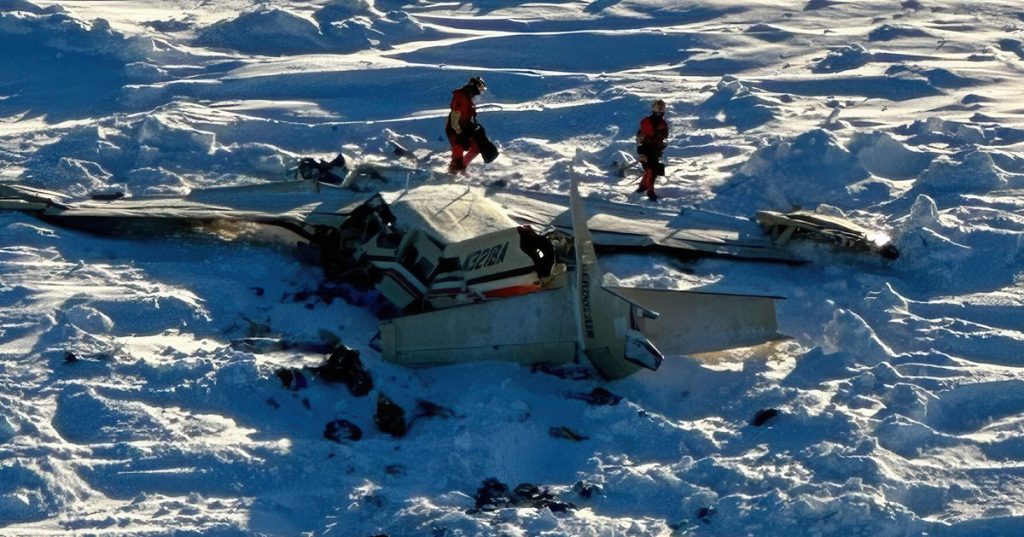Tragic Plane Crash in Western Alaska Leaves 10 Dead, Recovery Efforts Underway
In a devastating aviation disaster, a small commuter plane crashed in western Alaska on February 7, 2025, resulting in the deaths of all 10 people on board. The single-engine turboprop, operated by Bering Air, was en route from Unalakleet to Nome when it disappeared from radar shortly after takeoff. Despite an extensive search effort involving local, state, and federal agencies, the wreckage was not located until the following day. The aircraft was found on a drifting ice floe in the icy waters of the Bering Sea, approximately 30 miles southeast of Nome. Authorities are now racing against time to recover the wreckage and the remains of the victims before harsh weather conditions, including high winds and snow, complicate the process further.
The recovery operation is particularly challenging due to the dynamic nature of the ice floe, which is moving at a rate of about 5 miles per day. Officials have indicated that once the bodies are recovered, a Black Hawk helicopter will be used to transport the wreckage to land for further investigation. The National Transportation Safety Board (NTSB) has been called in to determine the cause of the crash, which remains unclear at this time. Radar data suggests that the plane experienced a rapid loss of both altitude and speed before disappearing, but no distress signals were received by authorities.
The crash has sent shockwaves through the tight-knit communities of western Alaska, where air travel is a lifeline due to the region’s vast and remote landscape. Unalakleet, the plane’s departure point, is a small village of about 690 residents located about 150 miles southeast of Nome. Nome, a hub community just south of the Arctic Circle, is renowned as the finish line of the iconic Iditarod sled dog race. The plane was on a regularly scheduled commuter flight, a common mode of transportation in Alaska, where many communities lack access to roads.
Among the victims were two individuals identified as Rhone Baumgartner and Kameron Hartvigson, who had traveled to Unalakleet to work on a critical heat-recovery system for the community’s water plant. The identities of the other eight victims, all adults, have not yet been released. Bering Air, the flight operator, has expressed its deepest condolences to the families and loved ones of those affected, describing the tragedy as a profound loss. The company has also set up telephone hotlines staffed by specialists to provide emotional support and updates to those impacted by the crash.
This disaster marks one of the deadliest aviation accidents in Alaska in over 25 years, underscoring the risks associated with flying in one of the most remote and unforgiving environments in the United States. Alaska’s reliance on air travel is unparalleled, with many communities depending on planes to transport goods, people, and even high school sports teams. However, this crash also highlights the vulnerabilities of such a system, particularly in the face of harsh weather conditions and the challenges of recovering wreckage in such a remote and dynamic setting.
The incident is part of a troubling pattern of recent aviation accidents in the United States. Just eight days prior, a commercial jetliner and an Army helicopter collided near the nation’s capital, resulting in 67 fatalities. Another deadly crash occurred on January 31, when a medical transportation plane went down in Philadelphia, killing six people on board and one person on the ground. As investigators work to determine the cause of the Alaska crash, the tragedy serves as a somber reminder of the risks and complexities inherent in air travel, even as it remains a vital connection for communities across the globe.









